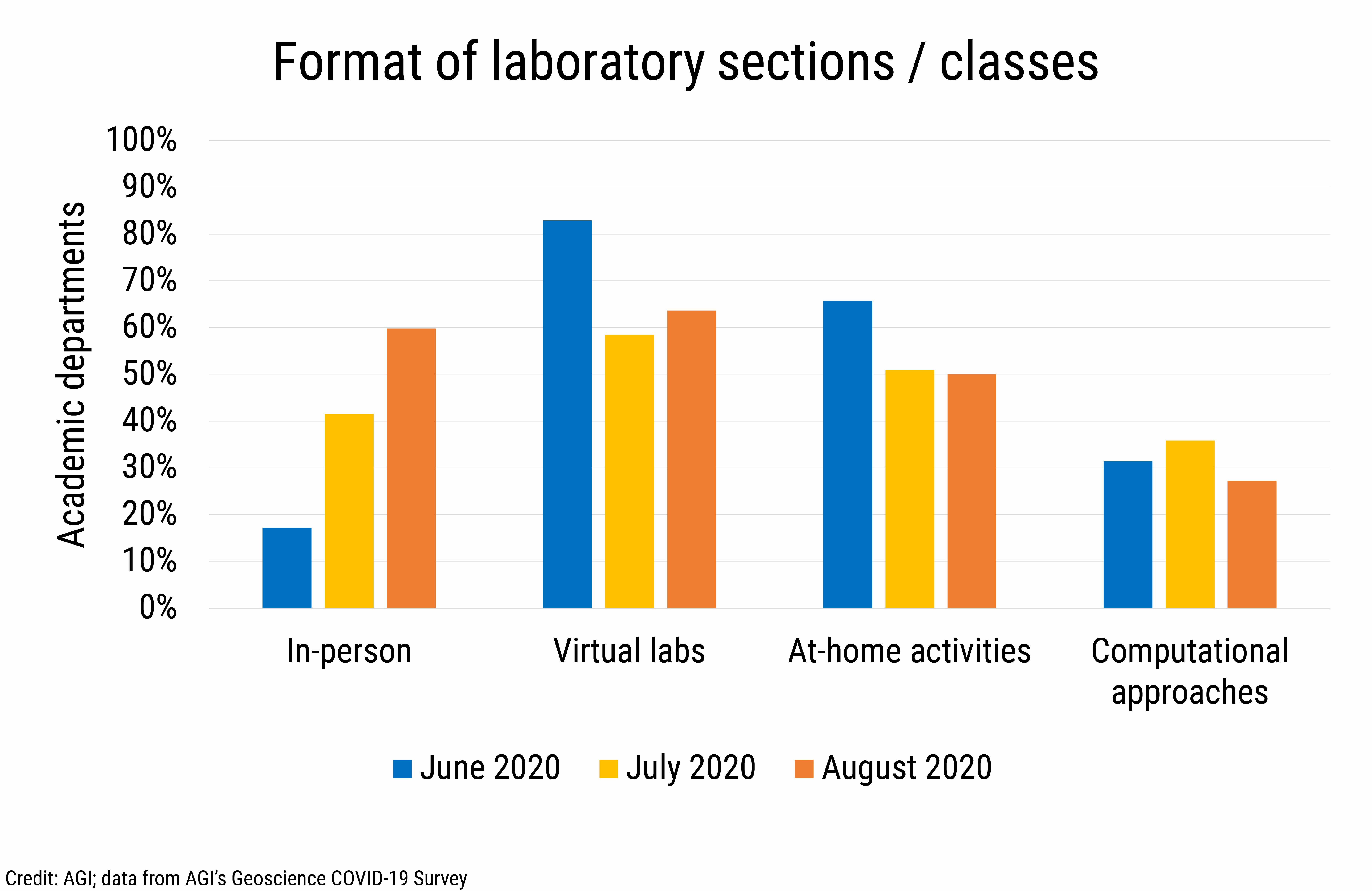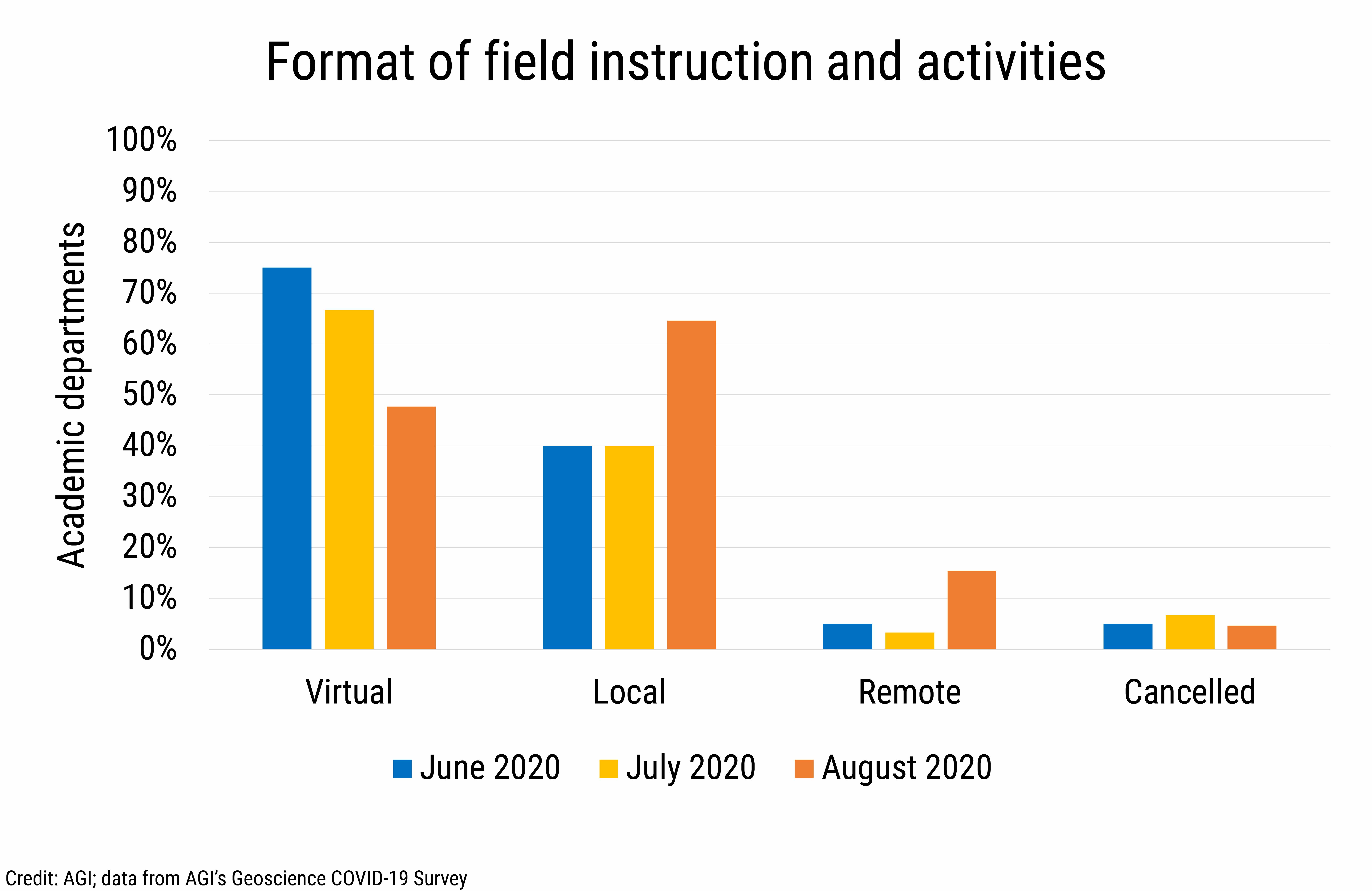Data Brief 2020-020 | September 25, 2020 | Written and compiled by Leila Gonzales and Christopher Keane, AGI, September 2020
Download Data Brief
COVID-19 Impacts on Geoscience Academic Instructional Environments, June — August 2020
This data brief examines the changes in instructional environments as a
result of the COVID-19 pandemic. During the Spring 2020 term, nearly all
academic departments shifted to online instruction. Throughout the
summer, departments offering courses were able to gradually
re-incorporate in-person instructional formats with safety measures
such as social distancing and limited class sizes, and also providing
hybrid formats such as flipped/blended courses that provide scheduled
times for in-person and online instruction, and HyFlex formats where
students can choose to attend either in-person or online class sessions.

DB_2020-020: chart 01: Course instructional formats (Credit: AGI; data from AGI’s Geoscience COVID-19 Survey)
AGI
During the Spring 2020 term, 93% of departments converted lab sections
into virtual or at-home activities, and one-third converted lab sections
to computational approaches. Only 4% of departments reported terminating
lab sections with the then-current grade or a pass/fail grade, and 5% of
departments reported no change to the Spring 2020 lab sections.
Throughout the summer, an increasing percentage of departments offering
lab sections and classes used in-person formats. By August, 60% of
departments were offering in-person labs and half or more of departments
were using virtual formats and at-home activities (64% and 50%
respectively).

DB_2020-020: chart 02: Format of laboratory sections / classes (Credit: AGI; data from AGI’s Geoscience COVID-19 Survey)
AGI
During the Spring 2020 term most departments converted field courses
into virtual experiences (63%), and just over one-third cancelled their
field courses (34%) with students either needing credit later or with a
waiver of credit requirement.
Throughout the summer, field instruction and activities moved from
predominantly virtual field experiences to an increasing percentage of
local field activities. Some respondents commented that local field
experiences included self-guided local investigations and local
in-person instruction with a small number of students per instructional
cohort.

DB_2020-020: chart 03: Format of field instruction and activities (Credit: AGI; data from AGI’s Geoscience COVID-19 Survey)
AGI
We will continue to provide current snapshots on the impacts of COVID-19
on the geoscience enterprise throughout the year. For more information,
and to participate in the study, please visit:
www.americangeosciences.org/workforce/covid19
Funding for this project is provided by the National Science Foundation
(Award #2029570). The results and interpretation of the survey are the
views of the American Geosciences Institute and not those of the
National Science Foundation.